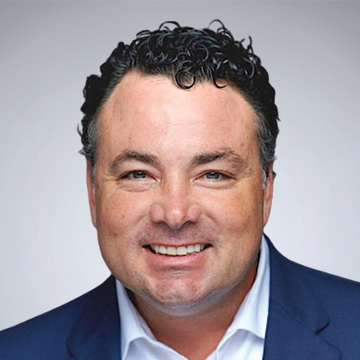Over the past few years, wholesale mortgage companies have seen an uptick in mortgage brokers who are eager to expand their business by offering debt-service-coverage ratio (DSCR) loans. These funding mechanisms qualify borrowers based on the income generated by an investment property and are used to cover monthly debt-service payments.
“A perfect storm of economic and housing factors conducive to a strong rental market is driving the sustained spike in DSCR loan demand.”
DSCR loans are also specifically geared to meet the needs of investors who are purchasing various types of real estate. These include single- family rentals, townhomes, two- to four-unit properties, warrantable or nonwarrantable condominiums, and planned unit developments.
Supply growth
A perfect storm of economic and housing factors conducive to a strong rental market is driving the sustained spike in DSCR loan demand. Millennials — today’s largest housing cohort — have new and growing families that require more space. Many are renting single-family residences in built-to-rent communities until they can find and afford a home of their own.
From September 2021 to September 2022, the number of built-to-rent homes delivered across the U.S. increased by 42%, according to the National Association of Home Builders. The conversion of commercial buildings into multifamily housing is also a growing trend in multiple markets, according to the Urban Land Institute and the National Multifamily Housing Council Research Foundation. Here are some other pertinent statistics:
According to a Roofstock study, approximately 10.6 million Americans derive income from a total of more than 17 million rental properties.
CoreLogic notes that real estate investors were responsible for 27% of single-family home purchases in first-quarter 2023, with transactions from small- and medium-sized investors representing the bulk of this activity.
The U.S. Census Bureau estimates that 81,000 single-family rentals were started last year, a record-high number that accounted for at least 8% of all new construction.
Meanwhile, the movement toward apartment living remains robust, especially in urban core neighborhoods. When looking exclusively at apartment construction in downtown areas, Atlanta led the nation by adding more than 21,000 units from 2013 to 2022, according to StorageCafe. Other cities that followed close behind include Los Angeles, Houston, Charlotte and Miami.
Solving challenges
Investors value the speed and relative ease of procuring DSCR loans, especially in hot markets where there is heavy competition for properties. Equally valuable to these investors are knowledgeable mortgage brokers, who know how these loans can overcome common financing challenges.
For example, new Fannie Mae and Freddie Mac guidelines recently imposed on condominiums have narrowed the definition of a warrantable condo. Investors looking to add rental condos to their portfolios often must turn to DSCR loans to purchase nonwarrantable units. Additionally, Fannie and Freddie will not back loans to investors who already own 10 financed properties. But DSCR loans do not have this limitation.
Beyond solving these common challenges, there are other reasons why experienced investors find DSCR loans to be particularly advantageous. Often, as they’re finalizing one deal, they’re thinking about their future expansion strategy. Many DSCR products come with a cash-out option, providing the equity these borrowers need to grow their portfolios.
Many property investors, following their accountant’s advice, continually swap properties for a tax advantage through a 1031 exchange. These transactions allow a borrower to sell one property and buy a “like-kind” property within a specific time frame. This swap enables the investor to defer capital-gains taxes. A DSCR loan is easy to do and quick to close, which is helpful in meeting the time requirements for a 1031 exchange.
Still other investors with particularly complex paperwork are attracted to the more compressed timeline inherent to DSCR loans. For example, if they’re in a rush to acquire a short-term rental in the Rockies in time for ski season, they simply don’t want the transaction to be delayed by intensive documentation and a protracted underwriting process.
Qualifying cash flow
When mortgage brokers and their nonqualified mortgage (non-QM) lender partners qualify investors and properties, they focus primarily on projected cash flow. Will the property or properties they’re purchasing provide enough income to cover the mortgage and other recurring costs?
To answer this question, they do some simple math. First, they calculate the investor’s monthly gross rental income, based on the lower of two measurements. The first is the 12-month average of short-term rental income, while the second involves the comparable market rent from either Fannie Mae Form 1007 (for a single-family property) or Form 1025 (for properties with two to four units).
This number is then divided by the investor’s expected monthly expenses, also known as PITIA (principal, interest, taxes, insurance and homeowners association fees). The quotient represents the investor’s debt-service-coverage ratio.
If the ratio is 1.0 (i.e., breaking even), the lender can expect that the borrower will have the funds to repay the loan. A ratio that exceeds 1.0 indicates positive cash flow even after accounting for monthly expenses. These numbers will factor into a lender’s final decision and the terms they offer. Some non-QM lenders will provide DSCR loans to investors whose ratio is less than 1.0, if they have other assets to compensate for a shortfall.
Terms and requirements for any of these loans will vary by lender. Common ones include a maximum loan-to-value ratio of 80%, six months of reserves held in a federally insured U.S. bank, or the ability to vest through a limited liability company or corporation.
Get the business
The question remains: How can brokers leverage opportunities to meet a property investor’s specific needs while keeping their loan pipeline flowing?
First, brokers should build their referral networks with a focus on investors and industry peers. Realtors, attorneys, accountants, financial advisers and builders are all excellent referral sources for real estate investors. This is especially true in areas experiencing high annualized rent growth, such as Boston; Hartford, Connecticut; Providence, Rhode Island; Cincinnati; and Chicago.
Second, jump on every chance to build partnerships. The minute that new construction breaks ground, it’s time to call the builder or Realtor involved and offer to help them quickly move every residential unit through a streamlined cash-flow lending process. Speed is important to a Realtor’s investor clients and they need DSCR lending experts who can help them provide quick service.
Make sure to partner with experienced non-QM lenders with a strong track record in DSCR loans. Longevity, dedicated expertise and a focus on true channel-based partnerships are valuable qualities in a lending partner. Look for companies that offer education and training, scenario-desk resources, and assistance with marketing, prospecting and joint presentations to Realtors and other referral partners.
As new investment properties continue to reshape the real estate market, brokers who master DSCR loans stand to benefit in multiple ways. They’ll increase their number of referrals and repeat clients — and ultimately their profits. ●
Author
-

Tom Davis is chief sales officer of non-QM lender Deephaven Mortgage. He joined Deephaven in 2022 and has more than 20 years of experience helping lending partners with their non-QM and agency needs. He holds a bachelor’s degree from Florida Atlantic University, where he double majored in finance and management. Deephaven was founded in 2012 and led the formation and development of the non-QM market. Reach Davis at tdavis@deephavenmortgage.com or visit deephavenmortgage.com.
View all posts







